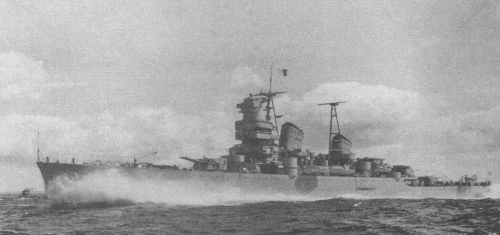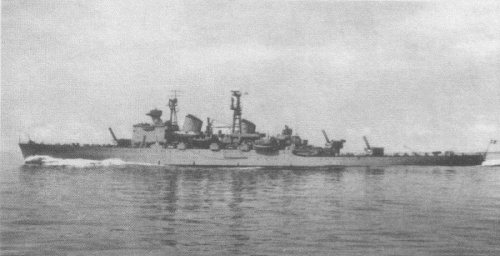

Göta Lejon 1947

Tre Kronor 1955

Göta Lejon 1968
| Name | No | Yard No | Builder | Laid down | Launched | Comp | Fate |
| Göta Lejon | 350 | Eriksberg, Göteborg | 27.9.1943 | 17.11.1945 | 15.12.1947 | stricken 7.1970, to Chile 9.1971 (Almirante Latorre) | |
| Tre Kronor | 600 | Götaverken, Göteborg | 27.9.1943 | 16.12.1944 | 18.10.1947 | stricken 1.1964 |
|
Displacement standard, t |
7650 |
|
Displacement full, t |
9238 |
|
Length, m |
174.0 pp 180.2 oa |
|
Breadth, m |
16.7 |
|
Draught, m |
5.70 normal 6.50 max |
|
No of shafts |
2 |
|
Machinery |
2 sets De Laval geared steam turbines, 4 Motala 4-drum boilers |
|
Power, h. p. |
90000 |
|
Max speed, kts |
33 |
|
Fuel, t |
oil |
| Endurance, nm(kts) | 4350(14) |
|
Armour, mm |
belt: 70 + 20, deck: 30 + 30, turrets: 125 - 50, CT: 20 |
|
Armament |
1 x 3 - 152/53 M42, 2 x 2 - 152/53 M42, 10 x 2 - 40/60 M36, 7 x 1 - 20/66 M40, 2 x 3 - 533 TT, 120 mines, 4 DCR |
|
Complement |
783 |
Project history: Coast defence battleships were considered as a a main body of Swedish Navy up to the end 1930th, however experience of the first months of the Second world war has led to a revision of their role in structure of the navy. Swedish Government have refused from building of two advanced ships of Sverige class with 254mm guns provided by naval building program, in favour of two light cruisers. New ships should become leaders of two task groups, consisting of four destroyers and four big torpedo boats everyone. Defence of Sweden shores against hypothetical fleet of intrusion was assigned to them in new conditions.
Cruisers were supposed to arm with 152mm guns, primarily ordered by Holland for Eendracht class cruisers. After occupation of Holland in May, 1940 Bofors made guns have appeared ownerless.
Naval council has decided to place the design assignment in Italy from which Sweden already had a wide co-operation experience. CRDA has prepared the design of a new cruiser in 1940-1941 on the basis of drawings of Taksin and Naresuan cruisers built for the Thai Navy. At the expense of growth of displacement from 5000 to 7000t protection has been strengthened and raised machinery power more than in twice (from 40 000 to 100 000hp). At early designing phases it was supposed to place all main guns in triple turrets, but it conducted to the further growth of displacement, and in a final variant only No1 turret remained triple.
The documentation has arrived to Sweden in 1941, but the building was started only two years later: the delay has been called by set of the changes brought on request of Naval council. Tre Kronor was ordered 5.2.1943 and on Göta Lejon 12.2.1943. Ships were not commissioned till the end of war: the German intrusion became all less real, and Sweden has received certain guarantees from Soviet Union.
Protection: Vertical protection consisted of 20mm plating and inner 80-70mm main belt. Two flat 30mm decks were connected with its upper and lower edges, magazines and machinery had additional 50-20mm horizontal armour. Upper deck was built from 20mm construction steel. Turrets had 125mm faces, 50mm roofs, 30mm sides and 80mm rears, main magazines had 30mm protection.
Modernizations: 1948, Tre Kronor: + British-made radars
(1950-1951), Göta Lejon; (1951-1953), Tre Kronor: - 10 x 2 - 40/60, 7 x 1 - 20/66; + 4 x 1 - 57/60 M50, 11 x 1 - 40/70 M48, radars
1958, Göta Lejon: new radars (LW-03, type 277, type 293, fire control radars)
Naval service: No significant events.

Tre Kronor 1947

Tre Kronor after modernization
Many thanks to Wolfgang Stöhr for additional information on this page.
© Ivan Gogin, 2009-15